There are many infections that can cause various diseases in humans. Among them, adenovirus occupies a special place. What kind of microorganism is it, what organs does it affect, how to deal with it? Many have heard of such a pathogen.
Adenovirus - what is this microorganism?
This infection belongs to the family of Adenoviruses, the genus of Mastadenoviruses. Currently, there are about forty serotypes. Each virus contains a DNA molecule, which is considered a distinctive feature from other respiratory representatives.
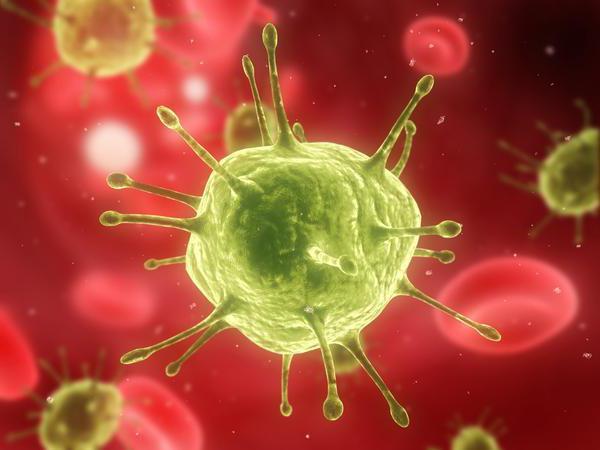
It has been established that adenovirus is a spherical microorganism whose diameter is 70-90 nm. It has a simple organization.
Pathogens were first isolated from the tonsils and adenoids of a sick child in 1953. Subsequently, smear microscopy also revealed adenovirus in patients with acute respiratory viral infection. What is this mysterious infection? But it is also detected in patients with signs of SARS with the development of conjunctivitis.
How is it transmitted
You can become infected with a viral pathogen through the airborne droplet and fecal-oral route, through objects of a sick person, food, water in open reservoirs or in swimming pools. Adenovirus is an infection that is transmitted by a person with already existing symptoms, and a virus carrier that does not have any signs of the disease.
The infection is resistant to environmental changes, does not die in air and in water, persists for a long time on drugs used for treatment in ophthalmology.
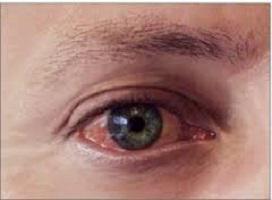
The site of the introduction of the virus are the mucous membranes of the respiratory and digestive systems, conjunctiva of the eye. Penetrating into the epithelial cells and lymph nodes, it begins to multiply. There is a development of a cytopathic effect and the formation of intranuclear inclusions. The affected cells are destroyed and die, and the virus migrates further down the bloodstream, infecting other organs.
Among some adenovirus serotypes, there are oncogenic representatives that cause the formation of malignant tumors in animals.
As a result of the activity of an adenovirus infection, epithelial tissue to a lesser extent performs a barrier function, which reduces the immunobiological reaction in the body and can cause the concomitant development of a bacterial lesion. It has no pathogenic effect on animals.
Re-infection protection
Typically, patients who have had an adenovirus infection develop persistent immunity, but only to a specific adenovirus serotype. What does it mean? It turns out that with subsequent contacts with a specific virus, a person will not get sick.
At birth, the child acquires passive immunity, which disappears after six months.
Varieties of Adenoviral Diseases
There are both random and epidemic manifestations of adenoviruses, most often in a children's team. Infection is characterized by a variety of manifestations, since the virus affects the respiratory system, mucous membranes of the eye, intestines, and bladder.
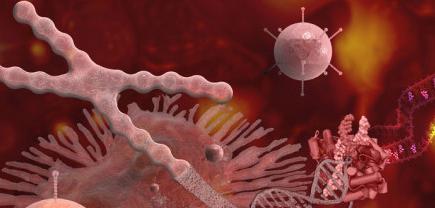
Adenoviruses act differently on humans. Classification of diseases includes:
- acute respiratory viral infection in combination with fever (usually develops in childhood);
- acute respiratory viral infection in adulthood;
- viral pneumonia;
- acute adenoviral tonsillitis (especially common in children in the summer after water procedures);
- pharyngoconjunctival fever;
- conjunctivitis membranous;
- mesadenitis;
- acute follicular conjunctivitis;
- adult epidemic keratoconjunctivitis;
- intestinal infection (enteritis, viral diarrhea, gastroenteritis).
The duration of the incubation period is from three to nine days.
Prevalence of diseases
Among all registered infections of the respiratory system, adenovirus damage accounts for 2 to 5%. Most affected are newborns and children.

From 5 to 10% of diseases of a viral nature account for adenovirus. What does this prove? First of all, these facts indicate its wide distribution, especially in childhood (up to 75%). Of these, up to 40% occurs in babies up to 5 years, and the remaining percentages extend to the age of 5 to 14 years.
Respiratory adenovirus disease
The disease begins with an increase in body temperature to 39 ° C, a headache and general malaise. Adenovirus acts differently on babies, the symptoms in children appear gradually, they are characterized by lethargy, lack of appetite, and low-grade body temperature.
Fever lasts up to ten days. Body temperature can either drop or rise again, at which time new symptoms are recorded.
From the first days of the disease, nasal congestion is observed. The next day, abundant mucous or mucopurulent discharge appears, accompanied by a dry frequent cough.
The throat begins to hurt due to redness of the mucous membrane of the pharynx, arches and tonsils, the latter increase in size.
Signs of airway inflammation
This form is considered the most common, it is characterized by inflammatory processes in the respiratory tract. The main diseases include laryngitis, rhinopharyngitis, tracheitis, bronchitis with moderate general intoxication.
Symptoms of Pharyngoconjunctival Fever
Adenovirus has a negative effect on the pharynx. Symptoms are due to an increase in temperature reaction for two weeks and signs of pharyngitis. Usually there are sore throats and rare urges to cough, then the infection does not go through the respiratory tract.
Symptoms of membranous conjunctivitis
Most often, adults and children in their teens are sick. The disease is caused by unilateral or bilateral development of conjunctivitis with the formation of a film on the mucous membrane of the lower eyelid. There is also pronounced edema and redness of the tissues surrounding the eye, pain, expansion of the vasculature in the conjunctiva and fever. With this disease, the respiratory system is not affected by an adenovirus infection.
Signs of tonsillopharyngitis
The disease develops in preschool children. A characteristic feature of tonsillopharyngitis is inflammatory changes in the tissue forming the pharynx and palatine tonsils. The adenovirus, photo of which is provided below, is the cause of angina.
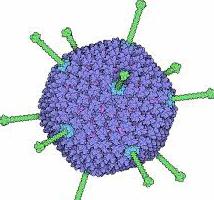
Varieties of the intestinal form
The manifestation of adenoviral infection in the intestine is associated with the development of moderate viral diarrhea and gastroenteritis. The virus causes nausea, vomiting, loose stools, not having an impurity, a slight increase in body temperature. In addition to intestinal disorders, infection of the respiratory system is possible, for example, rhinopharyngitis or laryngotracheitis.
Mesadenitis
Another form of disease in which there is abdominal pain and fever. Concomitant bacterial infection is not excluded, which requires antimicrobial therapy.
How to identify the pathogen
There are special methods by which adenoviruses are determined. Microbiology uses feces, discharge from the nasal passages, pharynx, and conjunctiva of the eye as the studied material. To establish the causative agent, inoculation is used, which is carried out in a culture of human epithelial cells.
In laboratory diagnostics, immunofluorescence microscopy reveals antigens for adenoviruses. Microbiology, in its arsenal, has a number of methods to determine this infection. These include methods:
- CSC - serodiagnosis of viral infections due to the reaction to complement-binding antibodies IgG and IgM.
- Rtga - is considered a reaction of inhibition of the hemagglutination process for identification of viruses or antibodies in the blood plasma of a sick person. The method works by suppressing viral antigens with antibodies from immune serum, after which the ability of viruses to agglutinate red blood cells is lost.
- The pH method is based on the reduction of cytopathogenic effects resulting from the combination of the virus and specific AT.
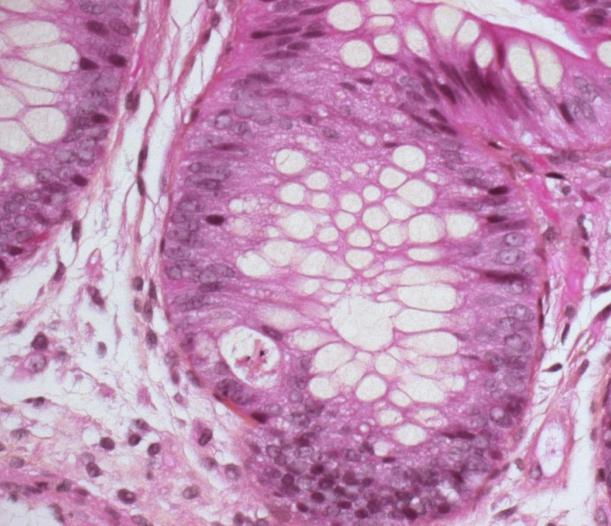
Detect a viral antigen using express diagnostics. Usually it includes such studies:
- enzyme-linked immunosorbent assay, or ELISA - a laboratory method for immunological determination of qualitative or quantitative characteristics of viruses, based on a specific reaction between an antigen and an antibody;
- an immunofluorescence reaction, or RIF, which allows the detection of antibodies to adenovirus infection (this method uses microscopy of smears previously stained with a dye);
- radioimmunoassay, or RIA, makes it possible to measure any concentration of viruses in a liquid.
How to fight the infection
After establishing an accurate diagnosis, the doctor and patient are faced with the question of how to treat adenovirus. It is believed that specific medicines do not currently exist.
Depending on the degree of the disease, therapy can be carried out at home as recommended by a doctor or in a hospital setting. Mild and moderate forms of infection without complications do not require hospitalization. Severe cases or complications should be treated in a hospital under the supervision of a physician.
To overcome adenovirus, treatment of mild forms is reduced to bed rest. At a body temperature above 38 ° C, paracetamol is prescribed in a dose of 0.2 to 0.4 g 2 or 3 times a day, which corresponds to 10 or 15 mg per 1 kg of weight per day. With adenovirus infection, acetylsalicylic acid is not taken.
Depending on the form of the disease, symptomatic treatment with antitussive, expectorant drugs is carried out, it is possible to treat with “Stoptussin”, “Glaucin”, “Glauvent”, “Mukaltin”.
In the form of inhalation, a deoxyribonuclease aerosol is used. It is used 2 or 3 times a day for 15 minutes. When rhinitis, they instill a nose with special drops.
To raise immunity, vitamin complexes with a mandatory content of ascorbic acid, tocopherol, rutin, thiamine and riboflavin are used.
If an adenovirus has struck the eyes, treatment is carried out with drops of the deoxyribonuclease enzyme in the form of a 0.1- or 0.2% solution every 3 hours, 3 drops. The doctor may prescribe local treatment for conjunctivitis with glucocorticoid ointments, interferon preparations, antiviral eye ointments with oxolin or tebrofen.
Infection protection measures
In order to prevent adenovirus infection and reduce the frequency of acute respiratory viral infections, live vaccines are used, which include attenuated viral cells of the predominant serotype.
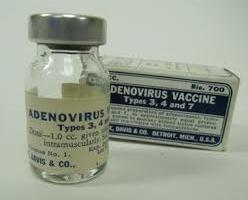
Typically, such preparations are used with adenovirus type 7 or 4. To protect against intestinal digestion, they are coated with a special capsule.
There are other vaccines in live and inactivated forms, but they are practically not used due to the oncogenic activity of adenoviruses.